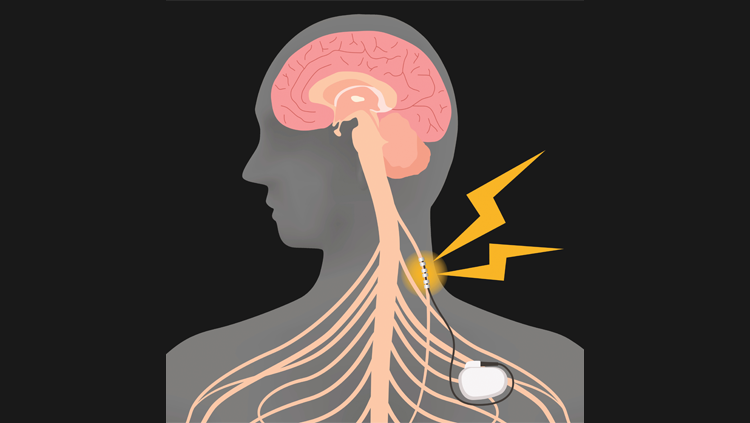The Different Kinds of Sleep
- Published20 Mar 2012
- Reviewed20 Mar 2012
- Source CIHR – Institute of Neurosciences, Mental Health and Addiction
Each of us spends about one-third of our life asleep. Or, to put it another way, by the time you’re 75, you will have spent 25 years sleeping. Sleep is part of the life of all higher vertebrates. Suppressing sleep for an extended period has dramatic effects on an organism’s physiological equilibrium. In short, sleeping is almost as important as eating or breathing.
From a behavioral standpoint, sleep is defined by four criteria: reduced motor activity, diminished responses to external stimuli, posture (lying down with eyes closed) and relatively ready reversibility. These criteria distinguish sleep from comas and from hibernation.
Compared with wakefulness and REM sleep, non-REM sleep is characterized by an electroencephalogram (EEG) in which the waves have greater amplitude and a lower frequency. From the time you fall asleep to the time you reach the deepest non-REM sleep, about 1 ½ hours later, the amplitude of these waves increases continuously, while their frequency diminishes correspondingly.
Scientists have assigned names to four frequency ranges of waves that can be distinguished in an EEG trace. From the highest to the lowest frequency, these waves are as follows.
- Beta waves: have a frequency range from 13-15 to 60 Hz and an amplitude of about 30 µV. Beta waves are the ones registered on an EEG when the subject is awake, alert, and actively processing information. Some scientists distinguish the range above 30-35 Hz as gamma waves, which may be related to consciousness–that is, the making of connections among various parts of the brain in order to form coherent concepts.
- Alpha waves: have a frequency range from eight to twelve Hz and an amplitude of 30 to 50 µV. Alpha waves are typically found in people who are awake but have their eyes closed and are relaxing or meditating.
- Theta waves: have a frequency range from three to eight Hz and an amplitude of 50 to 100 µV. Theta waves are associated with memory, emotions, and activity in the limbic system.
- Delta waves: range from 0.5 to three or four Hz in frequency and 100 to 200 µV in amplitude. Delta waves are observed when individuals are in deep sleep or in a coma.
- Lastly, when there are no brain waves present, the EEG shows a flat-line trace, which is a clinical sign of brain death.
These four types of brain waves, and others discussed below, are important criteria that have been used to define four distinct stages of non-REM sleep. Obviously, falling into a deeper and deeper sleep as the night progresses is actually a gradual, continuous process, but these four stages still provide a convenient means of describing the relative depth of non-REM sleep.
Stage One non-REM sleep begins when you first lie down and close your eyes. After a few sudden, sharp muscle contractions in the legs, the muscles relax. Then, as you continue falling asleep, the rapid beta waves of wakefulness are replaced by the slower alpha waves of someone who is relaxed with their eyes closed. Soon, the even slower theta waves begin to emerge.
Though your reactions to stimuli from the outside world diminish, Stage One is still the phase of sleep from which it is easiest to wake someone up. In experiments where people are awakened from Stage 1 sleep and asked about their state of consciousness, they usually report that they had just fallen asleep or had been in the process of doing so. They also often report having had stray thoughts and short dreams. Each period of Stage One sleep generally lasts three to twelve minutes.
Stage Two non-REM sleep is a stage of light sleep in which the frequency of the EEG trace decreases further while its amplitude increases. The theta waves characteristic of Stage Two sleep are interrupted by occasional series of high-frequency waves known as sleep spindles. These bursts of activity have a frequency of eight to fourteen Hz and an amplitude of 50 to 150 µV. Sleep spindles generally last one to two seconds. They are generated by interactions between thalamic and cortical neurons.
During Stage Two sleep, the EEG trace may also show a fast, high-amplitude wave form called a K-complex. The K-complex seems to be associated with brief awakenings, often in response to external stimuli.
Stage Three non-REM sleep marks the passage from moderately to deep sleep. Delta waves appear and soon account for nearly half of the waves in the EEG trace. Sleep spindles and K-complexes still occur, but less often than in Stage Two. The greater activity observed in the electro-oculogram (EOG) trace during stages three and four reflects the greater amplitude of EEG activity in the prefrontal areas, rather than eye movements.
Stage Three lasts about 10 minutes during the first sleep cycle of the night but accounts for only about 7 percent of a total night’s sleep. During Stage Three, the muscles still have some tone, and sleepers show very little response to external stimuli unless they are very strong or have a special personal meaning (for example, when someone calls your name, or when a baby cries within earshot of its mother).
Stage Four non-REM sleep is the deepest, the one in which we sleep the most soundly. The EEG trace is dominated by delta waves and overall neuronal activity is at its lowest. The brain’s temperature is also at its lowest, and breathing, heart rate and blood pressure are all reduced under the influence of the parasympathetic nervous system.
In adults, Stage Four lasts about 35 to 40 minutes during the first sleep cycle of the night; it accounts for 15 to 20 percent of total sleep time in young adults. The muscles still have their tonus, and some movements of the arms, legs and trunk are possible. This is the stage of sleep that accomplishes most of the body’s repair work and from which it is most difficult to wake someone up. This is also the stage of sleep in which children may have episodes of somnambulism (sleepwalking) and night terrors.
CONTENT PROVIDED BY

CIHR – Institute of Neurosciences, Mental Health and Addiction

















